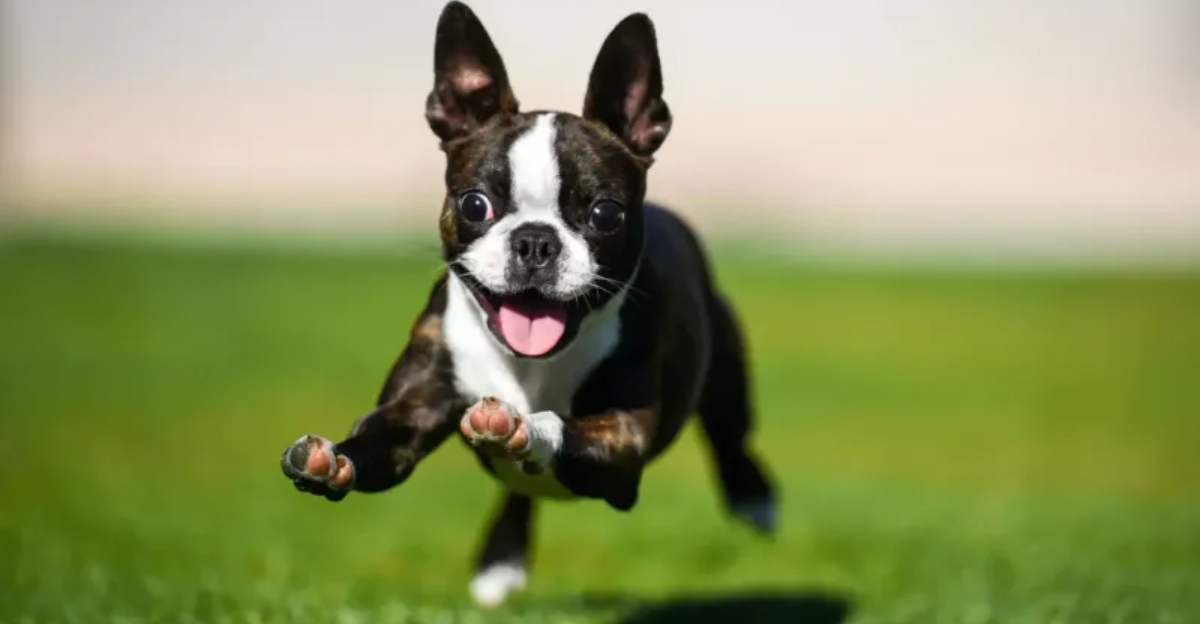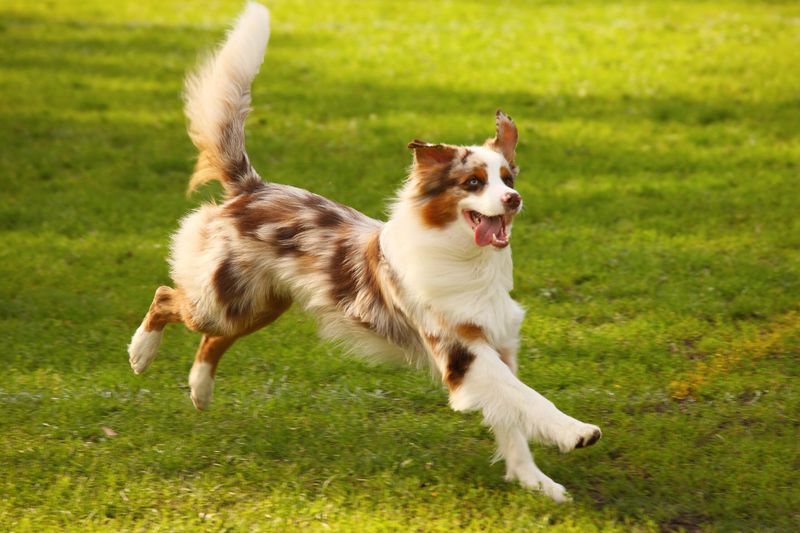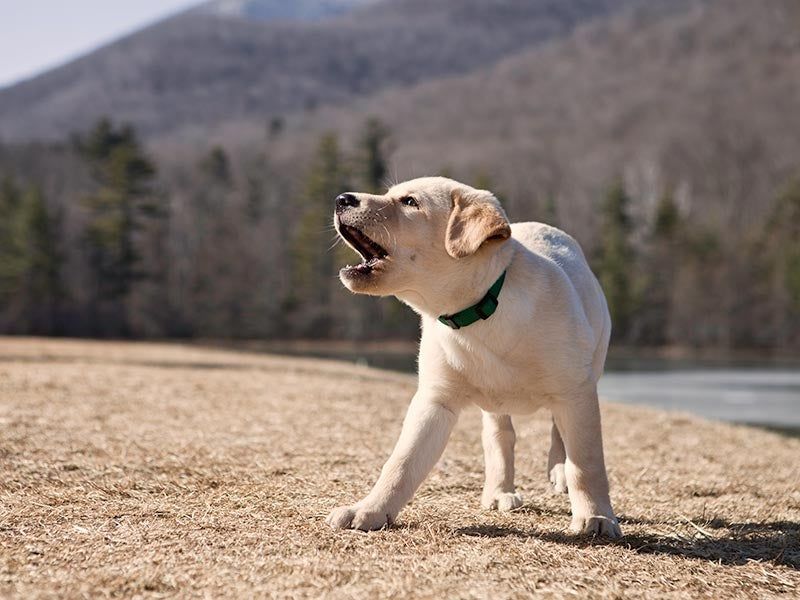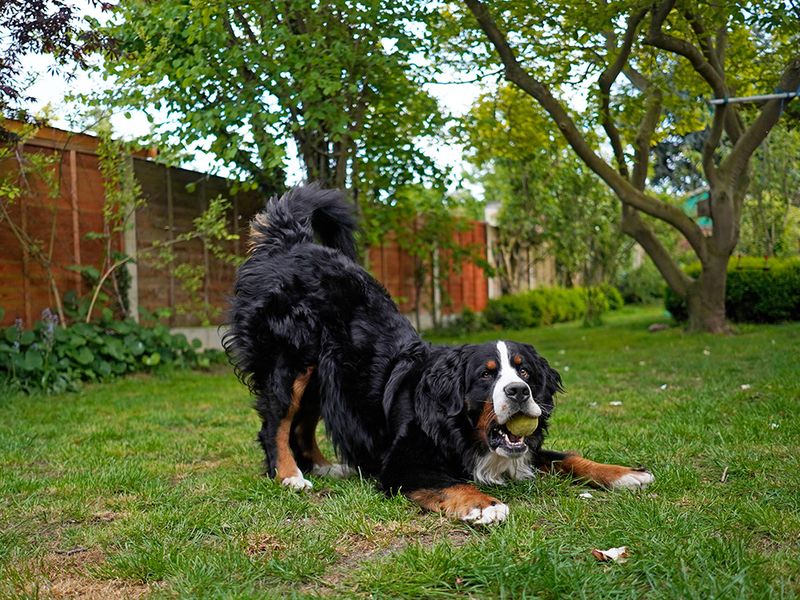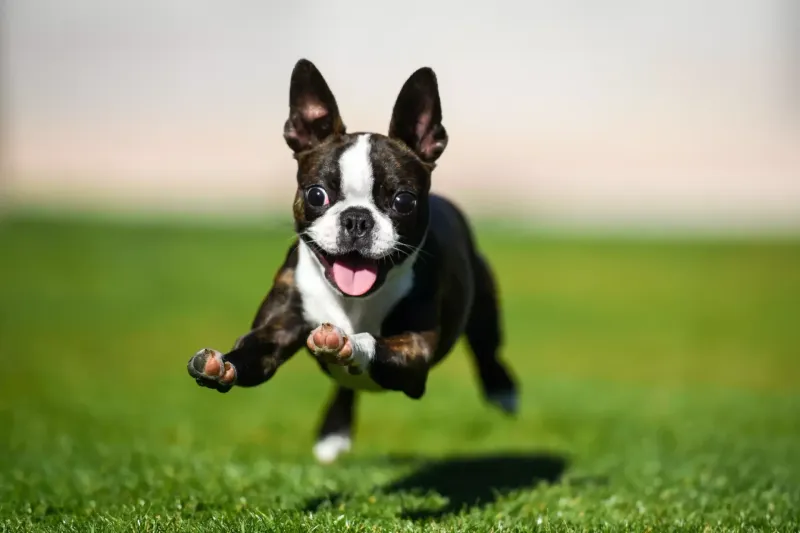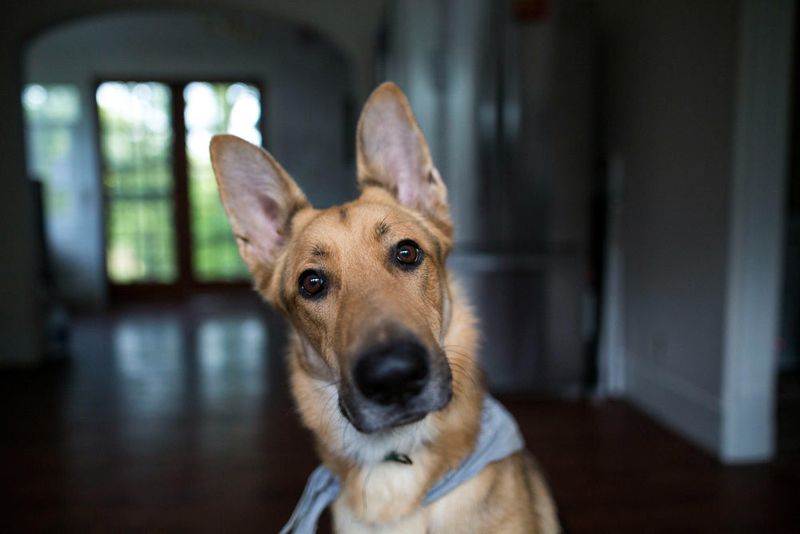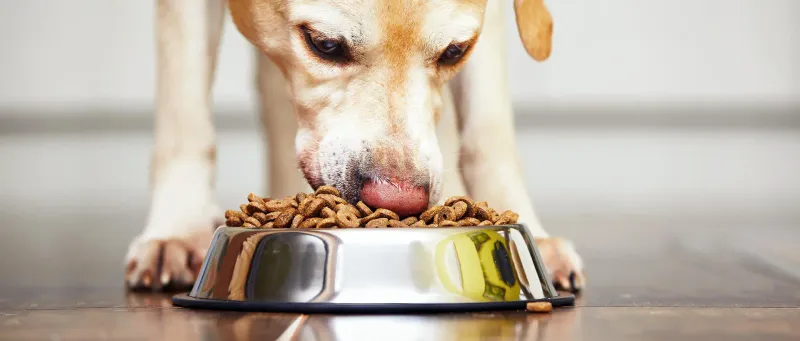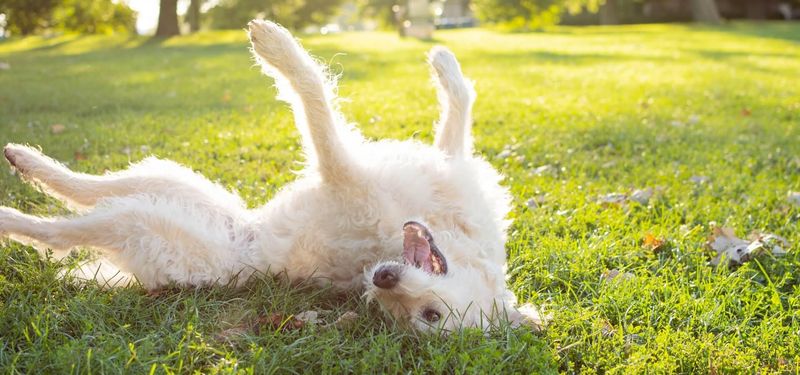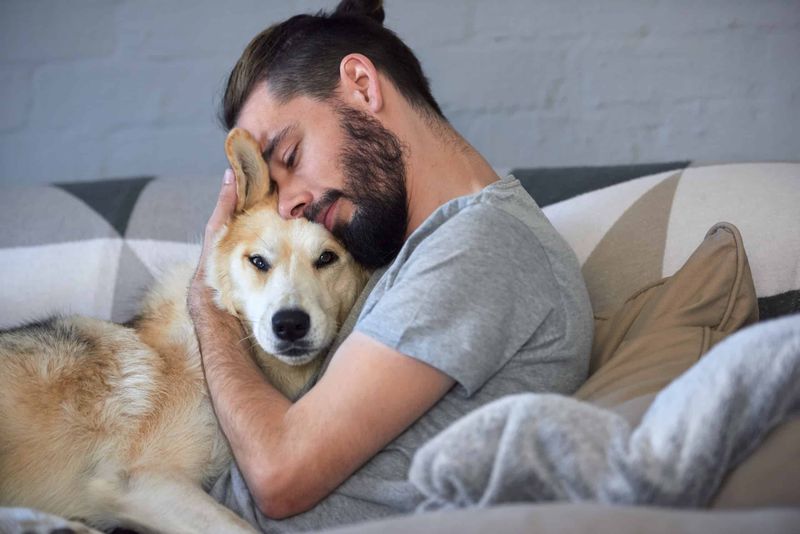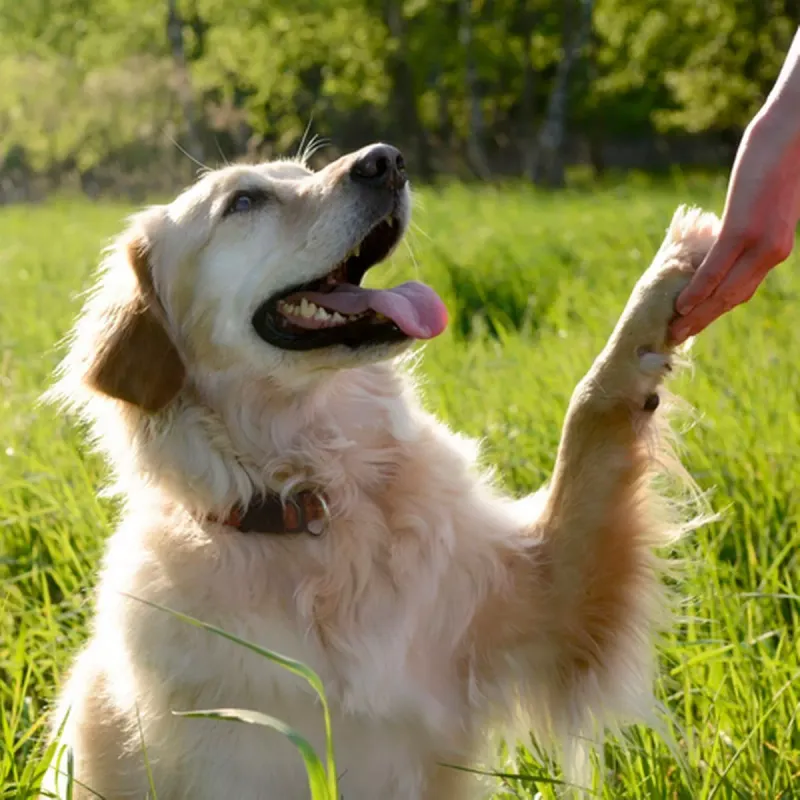Understanding whether your dog is truly happy is essential for their well-being and your peace of mind. Dogs communicate their happiness through various behaviors, and recognizing these can help you build a stronger bond with your canine companion.
Wagging Tail
A wagging tail is often a universal sign of a happy dog. When a dog’s tail wags energetically, it reflects their joy and excitement. This expressive behavior is not just about the movement but also about the posture; a high, loose wag usually means happiness. It’s fascinating how dogs use their tails to communicate their emotions so clearly. However, not all tail wags signify happiness; context and accompanying body language matter. For example, a low, stiff wag might indicate anxiety. So, understanding your dog’s specific tail wagging patterns can reveal much about their mood.
Playful Barking
When your dog barks in a playful manner, it’s often an invitation to join them in fun. This type of barking is usually high-pitched and short, contrasting with the deeper, prolonged barks associated with alertness or distress. Playful barking is infectious; it can spark a spontaneous play session, bringing joy to both you and your dog. Observing their playful antics accompanied by barks can be a delightful experience. Recognizing this behavior helps in understanding your dog’s social nature and desire for interaction, strengthening the bond between you and your furry friend.
Relaxed Body Posture
A relaxed body posture in dogs indicates contentment and peace. When a dog feels happy and secure, they often lie down with their belly exposed or with their limbs sprawled comfortably. Such a posture signifies that they trust their environment and feel no threat. Unlike tense, rigid stances, a relaxed dog emits calm vibes, making the atmosphere serene. Imagine a dog stretched out on a sunny patch, eyes half-closed. That’s the epitome of canine relaxation and happiness. Recognizing this behavior is crucial as it showcases your dog’s comfort level in their surroundings.
Excited Greeting
An excited greeting from your dog is a heartwarming sign of happiness. When you return home, and your dog leaps with joy, wagging its tail vigorously, it reflects their delight and affection. This enthusiastic reception is not just a mere habit but a genuine expression of joy. The sheer excitement radiates from their eyes, often with playful barks or spins. Such greetings reinforce your bond and show your dog’s eagerness to reconnect. Though sometimes overwhelming, these moments are precious reminders of the love and happiness your dog feels in your presence.
Play Bow
The play bow is a classic canine invitation to play. When a dog bends its front legs and keeps its rear end in the air, it’s a clear sign they want to engage in playful activities. This gesture is often accompanied by wagging tails and playful barks. It’s a universal signal among dogs, transcending breeds and sizes. Witnessing this behavior in your pet is heartening, as it indicates their joy and willingness to interact. Engaging with your dog during these moments can strengthen your relationship and provide mutual joy and exercise.
Soft Eye Contact
Soft eye contact is a subtle yet profound indicator of a dog’s happiness. When a dog gazes gently at you, it’s a sign of trust and affection. This eye contact differs from a hard stare, which can indicate aggression or discomfort. It’s a non-verbal way for dogs to express their attachment and contentment. Sharing these moments fosters a deep emotional connection. Such a gaze often accompanies a relaxed posture, enhancing the serenity of the interaction. Understanding the nuances of your dog’s eye contact can enrich your understanding of their emotional state.
Happy Sighs
Happy sighs in dogs are akin to a human’s contented exhale. When a dog lets out a soft, relaxed sigh, it often indicates a state of comfort and satisfaction. These sighs usually occur when a dog is resting, having found a cozy spot. It’s a subtle, yet powerful, expression of tranquility. Observing this behavior is heartwarming, as it signifies your dog’s well-being. Unlike sighs of boredom or frustration, happy sighs are gentle and accompanied by relaxed body language. Listening for these moments can give insights into your pet’s happiness and comfort.
Zoomies
Zoomies, or Frenetic Random Activity Periods (FRAPs), are bursts of high-energy activity. When a dog races around joyfully, often in circles, it’s a clear display of happiness and zest for life. These moments are spontaneous, marked by sheer exuberance. Watching a dog zoom around is both amusing and endearing. It’s their way of burning off excess energy and expressing joy. While zoomies are common in young dogs, even older dogs can occasionally indulge in this playful behavior. Recognizing and enjoying these moments is a testament to your dog’s lively and spirited nature.
Nudging for Attention
When a dog nudges you with its nose or paw, it’s a tender request for affection. This behavior reflects their desire for closeness and interaction. A gentle nudge often leads to petting sessions or playtime, fulfilling their social needs. It’s a heartwarming gesture that shows their trust and affection. Unlike demanding behaviors, nudging is subtle yet effective. Recognizing this sign can enhance your bond, as it reveals your dog’s love and comfort with you. Responding to these nudges with positive reinforcement strengthens the relationship between you and your furry companion.
Contented Eating
A dog enjoying its meal with gusto is often a happy dog. When dogs eat contentedly, without rushing or showing signs of stress, it indicates satisfaction and well-being. A relaxed eating posture, with calm tail wags or gentle munching sounds, is a positive sign. This behavior reflects their comfort with their environment and their contentment with the food provided. Observing your dog eating happily can be reassuring, as it underscores their health and happiness. Ensuring a peaceful eating environment contributes to this positive behavior, enhancing your dog’s overall well-being.
Joyful Rolling
Joyful rolling on the ground is a delightful expression of dog happiness. When a dog rolls around with carefree abandon, it often signifies pure bliss. This behavior is usually accompanied by wagging tails and joyful snorts or snuffles. It’s a form of play that also helps them scratch their back or spread their scent. Watching a dog enjoy this simple pleasure is heartening. It reflects their contentment and enjoyment of their surroundings. Encouraging such play can strengthen your bond and provides a wonderful opportunity for outdoor playtime.
Gentle Snuggles
Gentle snuggles from a dog are a loving gesture that indicates happiness and security. When a dog nestles close to you, it’s a sign of their trust and affection. These moments are cherished, as they offer warmth and companionship. Dogs express their love through subtle snuggles, often seeking warmth or comfort. This behavior strengthens the emotional connection and highlights the bond between you and your pet. Unlike boisterous play, snuggles provide a quiet, peaceful interaction that underscores your dog’s contentment with your presence.
Paw Offering
Offering a paw is more than a learned trick; it can be a genuine display of affection and happiness. When a dog extends its paw, it often seeks interaction or rewards. This delightful behavior is both endearing and engaging. It reinforces training and showcases the bond between you and your pet. Dogs use paw offering to communicate and connect, often followed by treats or affection. Recognizing this gesture as a sign of their happiness can enhance your relationship. This mutual exchange of gestures and rewards strengthens the trust and love between you and your furry friend.
